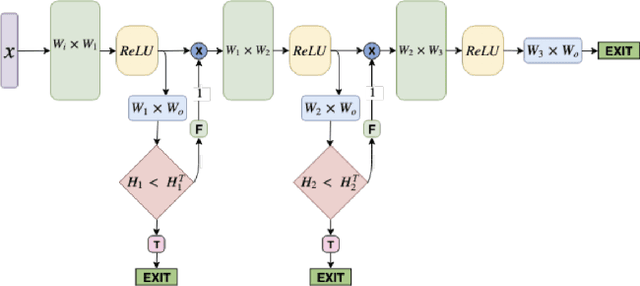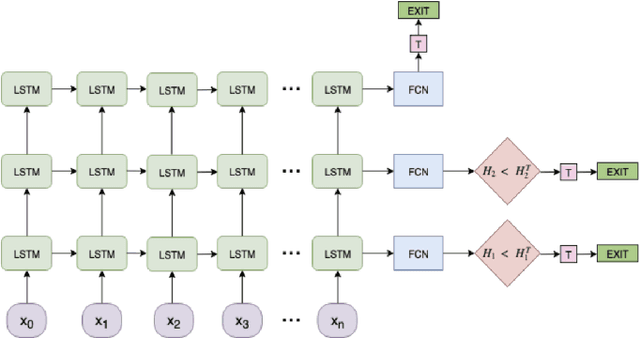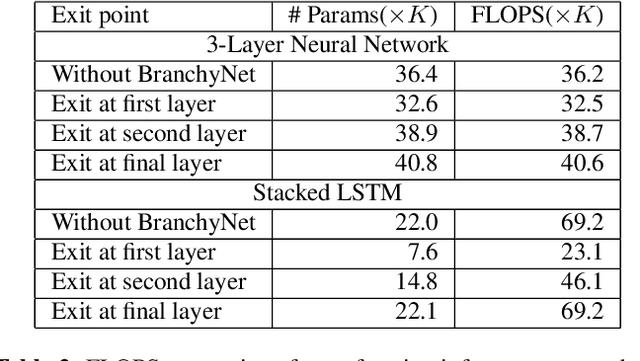Fast Intent Classification for Spoken Language Understanding
Paper and Code
Dec 03, 2019



Spoken Language Understanding (SLU) systems consist of several machine learning components operating together (e.g. intent classification, named entity recognition and resolution). Deep learning models have obtained state of the art results on several of these tasks, largely attributed to their better modeling capacity. However, an increase in modeling capacity comes with added costs of higher latency and energy usage, particularly when operating on low complexity devices. To address the latency and computational complexity issues, we explore a BranchyNet scheme on an intent classification scheme within SLU systems. The BranchyNet scheme when applied to a high complexity model, adds exit points at various stages in the model allowing early decision making for a set of queries to the SLU model. We conduct experiments on the Facebook Semantic Parsing dataset with two candidate model architectures for intent classification. Our experiments show that the BranchyNet scheme provides gains in terms of computational complexity without compromising model accuracy. We also conduct analytical studies regarding the improvements in the computational cost, distribution of utterances that egress from various exit points and the impact of adding more complexity to models with the BranchyNet scheme.
 Add to Chrome
Add to Chrome Add to Firefox
Add to Firefox Add to Edge
Add to Edge